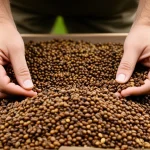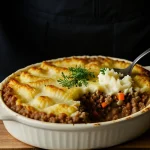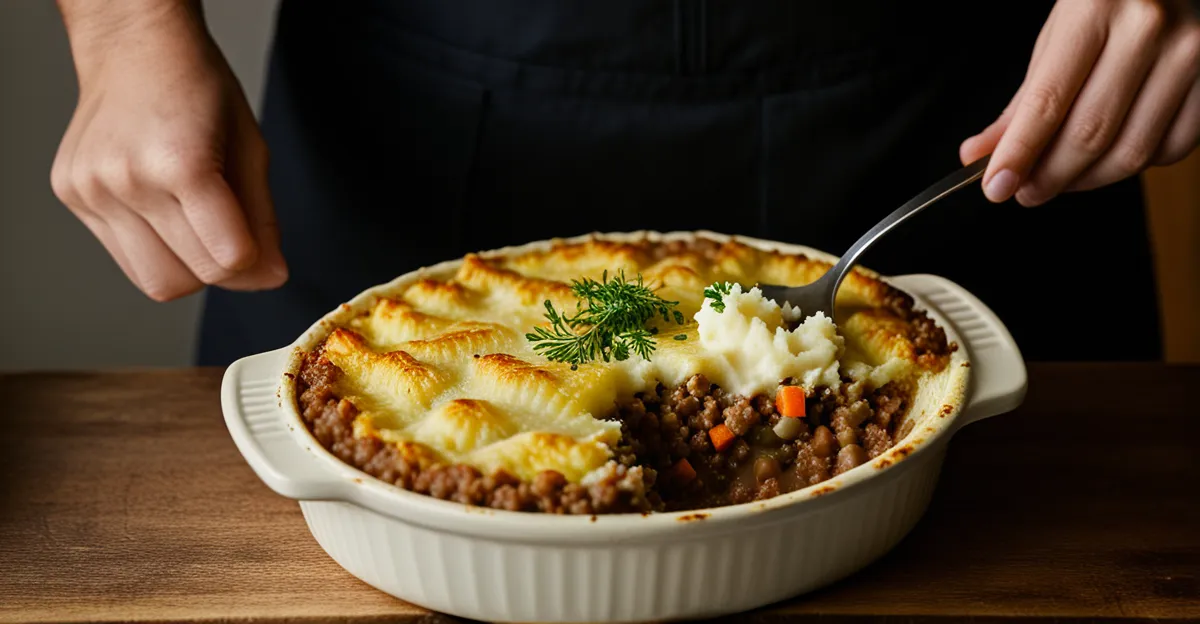Essential Ingredients for a Traditional Shepherd’s Pie
When discussing traditional shepherd’s pie ingredients, the core components are essential to preserve the classic appeal of this beloved dish. At the heart of any classic shepherd’s pie lies lamb, which differentiates it from its cousin, cottage pie, made with beef. Using lamb is not just a matter of preference; it defines the dish’s authenticity and rich flavor profile. The vegetables typically include onions, carrots, and peas, chosen for their complementary sweetness and texture that balance the meat’s robustness.
Potatoes form the other critical ingredient, specifically prepared as a creamy mashed potato topping that blankets the savory meat and vegetable base. These staples—lamb, vegetables, and potatoes—are considered the homemade shepherd’s pie basics due to their historical and culinary significance in the dish’s regional origin.
In parallel : How can you create a delicious Welsh rarebit at home?
For those wondering about ingredient substitutions while maintaining authenticity, some variations can include adding parsnips or swede to the vegetable mix, enhancing earthiness without straying far from tradition. However, swapping lamb for another meat fundamentally alters the dish’s identity, moving it away from a true traditional shepherd’s pie. Thus, sticking to these traditional shepherd’s pie ingredients makes all the difference in achieving the classic shepherd’s pie experience.
Step-by-Step Guide to Making Shepherd’s Pie
When learning how to make shepherd’s pie, it’s important to follow a structured shepherd’s pie recipe that highlights the interplay of flavors and textures. Begin by preparing the lamb and vegetables—the cornerstone of any classic shepherd’s pie. Brown finely chopped lamb in a skillet, ensuring it cooks evenly and releases its rich flavor. Sauté onions, carrots, and peas alongside the lamb to create a harmonious blend, adding seasonings like thyme, rosemary, salt, and pepper to enhance the meat’s natural taste.
Also to discover : How do you create a traditional British afternoon tea menu?
Next comes crafting the mashed potato topping, a defining feature in a homemade shepherd’s pie basics approach. Boil peeled potatoes until tender, then mash them with butter, cream, or milk to achieve the ideal creamy yet fluffy consistency. This mashed layer should be smooth enough to spread easily but firm enough to hold shape once baked.
Assembling the pie involves layering the seasoned lamb and vegetable mixture into a baking dish, then crowning it generously with the mashed potatoes. Spread the topping evenly and create ridges with a fork to encourage a golden, crispy finish during baking. Place the pie in the oven, typically at 375°F (190°C), and bake for about 20 to 30 minutes until the top turns golden brown and the filling bubbles at the edges. This step-by-step process ensures your dish embodies the heart of the shepherd’s pie cooking steps while honoring traditional elements.
Tips for Achieving Authentic Shepherd’s Pie Flavor
Achieving the traditional shepherd’s pie flavor hinges primarily on using lamb rather than beef. Lamb provides a distinct richness and depth that beef cannot replicate, firmly anchoring the dish in its classic roots. Substituting beef or other meats deviates from authentic shepherd’s pie and results in a different flavor profile altogether.
Proper seasoning is crucial in developing a well-balanced shepherd’s pie. Incorporating herbs such as thyme and rosemary enhances the natural taste of lamb and vegetables, elevating the overall dish. Avoid overwhelming the subtle flavors with excessive salt or spices; instead, focus on a measured blend that complements the meat and vegetables seamlessly.
Mastering the ideal texture for mashed potatoes is another key authentic shepherd’s pie tip. The potatoes should be creamy and smooth to provide a comforting contrast to the savory filling, yet firm enough to hold a golden crust after baking. Using butter and cream or milk while mashing achieves this balance, ensuring the topping remains both fluffy and stable. Over-mashed potatoes risk becoming gluey, while under-mashed can appear lumpy and detract from the experience.
In summary, the best shepherd’s pie cooking advice centers on:
- Prioritizing lamb as the main protein for authentic flavor.
- Seasoning judiciously to enhance but not overpower.
- Perfecting the mashed potato topping for texture and finish.
These elements contribute to recreating the hearty, classic taste expected from a traditional shepherd’s pie.
Understanding the Tradition: What Makes Shepherd’s Pie Classic
The origin of shepherd’s pie traces back to 18th-century rural Britain and Ireland, where it served as a practical way to repurpose leftover roasted meat. This dish’s foundation lies in making the most of available ingredients, combining minced lamb with mashed potatoes to create a filling, affordable meal. The term “shepherd’s pie” specifically emerged because the use of lamb reflects the pastoral livelihoods of shepherds, distinguishing it from “cottage pie,” which uses beef. Thus, the history of shepherd’s pie is closely tied to the regional agricultural practices and socio-economic conditions of its birthplace.
Traditional methods emphasize simplicity and resourcefulness. Instead of elaborate sauces or exotic spices, the classic shepherd’s pie relies on basic but high-quality ingredients—lamb, root vegetables, and creamy potatoes. These traditional shepherd’s pie ingredients are prepared with straightforward techniques, such as gently sautéing the meat and vegetables and carefully mashing potatoes to the preferred texture. This contrasts with many modern variations that may incorporate non-traditional vegetables, additional cheeses, or flavor enhancers, which while delicious, shift away from the dish’s original character.
The enduring appeal of shepherd’s pie as a classic comfort food lies in this adherence to tradition. Its warmth, heartiness, and humble ingredients resonate with many who seek both nourishment and a connection to history through cuisine. By understanding the traditional shepherd’s pie explained, one appreciates not only the flavors but also the cultural significance that has solidified its place on tables for centuries.











